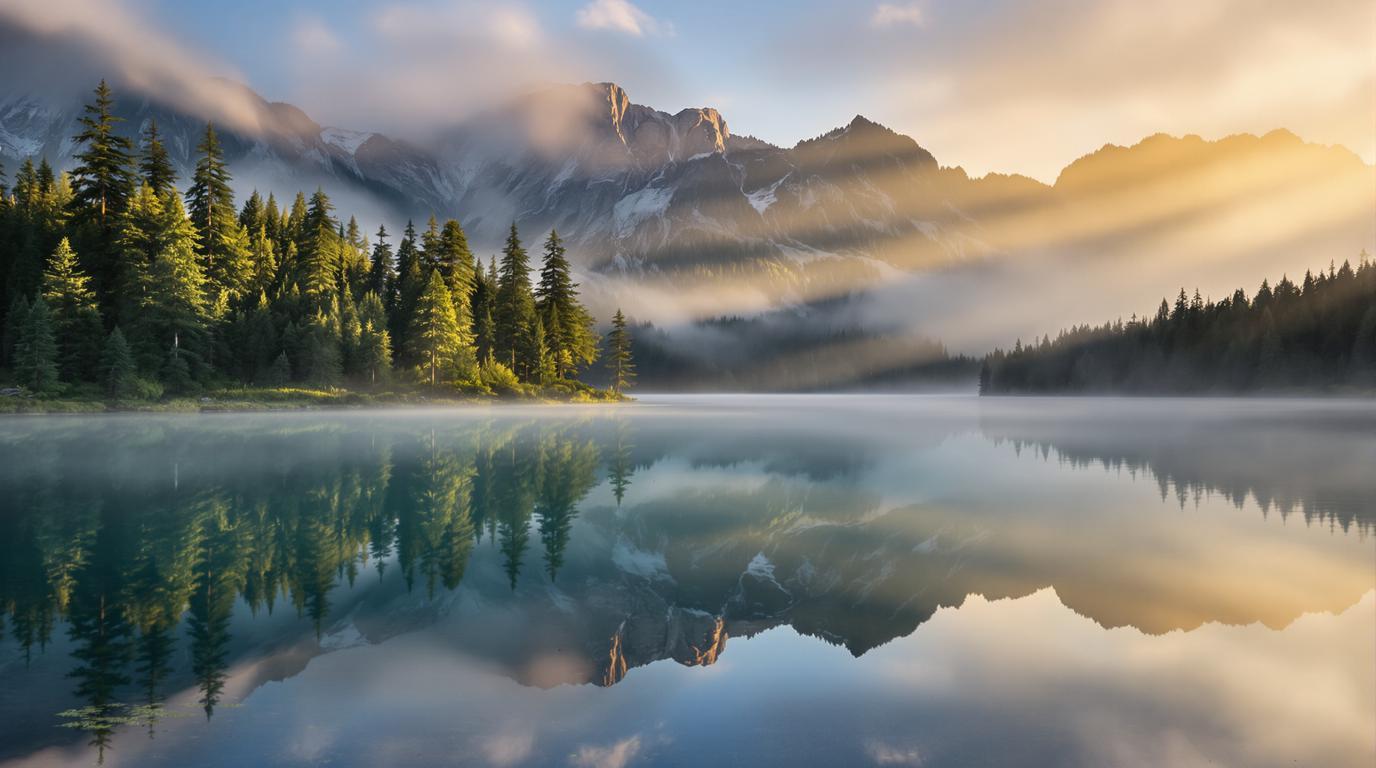I stepped from the forest path onto the shores of Lac Genin at dawn, when mist still clung to the water like a lover reluctant to leave. The locals call it “the little Canada of Upper Bugey,” but that modest nickname hardly captures the wild intimacy of this alpine jewel. Standing there, watching the rising sun pierce through stands of ancient pines, I understood why this secret spot has remained largely undisturbed while hordes of tourists crowd the more famous French lakes.
A wilderness pocket in France’s mountainous Jura
Tucked away at 831 meters altitude in the Jura Massif, Lac Genin sits in a forested bowl between the villages of Charix and Échallon. The lake’s history stretches back to the glacial periods that carved out this landscape, creating what locals now cherish as their secret escape from nearby Geneva and Lyon.
“We prefer to keep Lac Genin for ourselves,” confided Marcel, a cheese maker from Oyonnax I met along the shore path. “But those who make the effort to find us are always welcome to share our paradise.”
This 380-meter-long alpine gem transforms dramatically with the seasons—from summer swimming hole to winter wonderland when the entire surface freezes solid enough for ice skating. Its proximity to medieval French villages known for world-famous cheese makes it an ideal base for exploring this lesser-known corner of France.
Discoveries beyond the shoreline
The enchanted forest circuit
Most visitors never venture beyond the main beach area, missing the unmarked discovery trail that circles the lake through moss-covered terrain. I followed barely visible paths between towering spruces where sunlight filtered through in dramatic rays. The 45-minute circuit revealed hidden picnic clearings and secluded fishing spots where local anglers have been casting lines for generations.
Winter’s frozen canvas
During January and February, Lac Genin transforms into a natural ice rink surrounded by snow-dusted pines. Unlike busier alpine destinations, here you’ll find locals skating in peaceful solitude, their laughter echoing across the frozen surface. The Auberge du Lac Genin rents skates for just a few euros and serves steaming vin chaud to warm cold fingers after hours on the ice.
For the truly adventurous, this frozen landscape connects to trails leading toward an alpine village that transforms completely at 3,400 meters, offering a remarkable contrast to Lac Genin’s intimate scale.
Mountain flavors from forest and stream
The Auberge du Lac Genin stands as the culinary heartbeat of this hidden destination. In this rustic wooden lodge, Chef Antoine crafts a trout amandine that redefines freshness—the fish caught from the lake that morning, served with locally foraged mushrooms and herbs.
But the true revelation comes in discovering the Comté cheese made in nearby mountain villages. At the Saturday morning market in Oyonnax (just 12km away), I sampled 18-month aged Comté that carried notes of hazelnuts and sweet grass from the highland pastures where cows graze freely through summer months.
Savvy strategies for the perfect visit
When to arrive
Visit on weekday mornings, especially in summer, to experience the lake at its most tranquil. June offers perfect swimming temperatures without the crowds of July and August, while October dazzles with autumn colors reflected in still waters.
Getting there
Rent a car from Geneva (just 45 minutes away) for the most flexibility, as public transportation to the lake is limited. The winding forest road from Oyonnax provides the most scenic approach, with several pull-offs for photographing the countryside. From Paris, consider extending your journey with stops at a French village of just 100 residents with medieval streets unchanged since the 1700s.
Reflections on a hidden paradise
As I departed Lac Genin, watching families arriving with picnic baskets and fishing poles, I realized the true magic of this place isn’t any single attraction but its stubborn resistance to change in a world obsessed with development. In our rush to see the famous lakes of Europe, we sometimes miss these perfect pockets of authenticity—where nature remains wild and experiences remain genuine.
